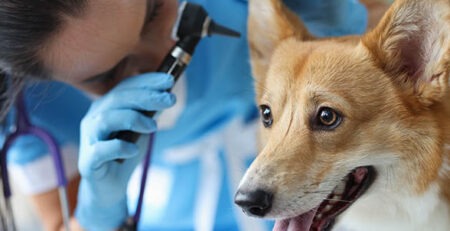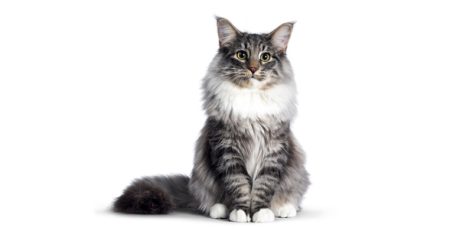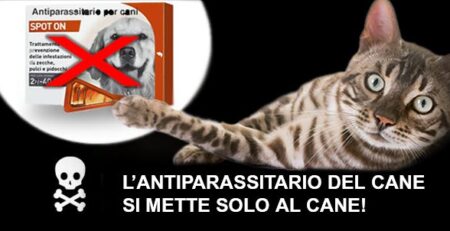Table of Contents
Feline rhinotracheitis, more commonly known as cat cold, is a highly contagious infectious disease affecting the upper respiratory tract of cats.
Rhinotracheitis is caused by feline herpesvirus type 1 (FHV-1).
Herpesvirus indiscriminately affects cats of all ages, sexes, and breeds.
In particular, however, those most at risk are very young cats, unvaccinated kittens, and those who live outdoors and come into contact with contaminated cats.
How is rhinotracheitis transmitted?
The virus is shed directly into the environment via the ocular, nasal, and pharyngeal secretions of cats in the acute phase of disease or carriers.
Although it endures little in the outdoor environment, in a moderately warm and humid climate, the virus survives long enough to infect several cats.
As a result of this, where there are high concentrations of cats, herpesvirus is highly likely to spread like wildfire.
Not surprisingly, this is a sadly known infection especially among those who manage feline colonies.
Cats cured of rhinotracheitis remain carriers and eliminators of the virus
Unfortunately, it is estimated that about 80 percent of cured cats remain carriers of the virus.
And again, a characteristic feature of this infection is the phenomenon of latency-that is, its ability to remain localized in an inert form in the host cat’s nervous system cells.
Incidentally, it is not removed from there.
On the contrary, as a result of stress or other diseases, the virus comes out of its latency phase and flares up again.
To make matters worse, even kittens can contract rhinotracheitis directly from their mother
Maternal antibodies, acquired through colostrum, protect kittens from the disease during the first few weeks of life.
However, this immunity is bound to fade after very few weeks of puppies’ lives.
In conclusion, this is a vicious cycle that clearly shows why it is so difficult to eliminate the virus in catteries and all environments with a high density of animals.
Early symptoms of rhinotracheitis
The incubation period is usually 2-6 days, but can be longer.
Viral rhinotracheitis in most cases manifests in an acute form with the onset of respiratory symptoms characterized by sneezing, serous nasal and ocular discharge, fever and lack of appetite.
These manifestations are followed by the appearance of conjunctivitis, initially serous, which often evolves with mucus and pus production
As the pus dries, it forms scabs on the outside that “glue” the eyelids together.
If the pus stagnates inside the eye, the risk is that serious injuries remain that cannot be healed: complete loss of vision or even the cat’s eye.
That is why it is important to remove the scabs, open the eyelids frequently, and remove the pus.
In addition, when the disease presents in a more aggressive form, additional complications may arise: dermatitis, neurological signs, pneumonia, and even oral ulcers.
The course of rhinotracheitis
In most affected adults, clinical signs of rhinotracheitis disappear in 2-3 weeks.
Different is the case for puppies, elderly cats, and immunocompromised cats whose immune systems do not always respond positively and who are often life-threatening.
The cure for rhinotracheitis
Here is what the treatment involves, which, remember, can ONLY be prescribed by your trusted veterinarian and after the necessary examination to confirm the diagnosis:
- eye drops
- antibiotics
- Mucolytic drugs to relieve the oppression caused by mucus
- Aerosol to clear the respiratory tract and also restore kitty’s appetite
- Supplements and vitamins to boost the cat’s immune system
Precautions to avoid rhinotracheitis infection
The possibility of contagion is reduced with proper disinfection of environment and accessories, kennels, bowls and carriers.
If your cat has gotten sick with rhinotracheitis and if you have other cats in the house, you need to keep it isolated to avoid infection.
Then, after caring for the sick cat, change clothes, use gloves and disinfect hands, arms and face very well before coming into contact with other healthy cats living in the house.
How to defend cats from rhinotracheitis?
The preventive prophylaxis par excellence is vaccination.
Contact the veterinary doctors on our Staff to schedule the vaccine and scrupulously provide subsequent booster shots throughout your cat’s lifetime.
Also remember that, that in case of need and urgency, our Staff Veterinary Doctors are always available: the La Veterinaria Clinic is open every day h24 including holidays and with First Aid service from 8 pm to 8 am.
For the joy of seeing them happy











